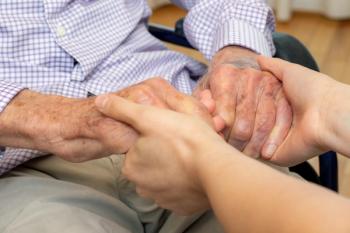
Smart Bandage Can Sense Wound Healing, Administer Drugs
Why the microprocessor-driven tech could be a game changer.
Doctors may soon have a new high-tech tool in their wound-care toolbox. Scientists are working on a “smart” bandage that would monitor wounds as they heal and automatically administer a tailored dose of medication as necessary.
So far, the idea hasn’t been tested in a clinical setting—
>>
Sameer Sonkusale, PhD, professor of electrical and computer engineering at Tufts University, said the prototype came out of a National Science Foundation-funded project to develop flexible bioelectronics. He told Healthcare Analytics News™ that the new bandage is the first to form a comprehensive wound-care solution.
“In the past, people have made dressings that can deliver drugs or have made bandages that can sense how they are healing,” he said. “But never have we achieved a closed loop operation where sensors were used to monitor and then control drug delivery in a closed loop.”
To accomplish the task, the bandage senses pH levels and temperature at the wound site, two data points that can indicate whether a wound is healing. Sonkusale and his team have also developed a tool for oxygenation, though that sensor was not included in the study published this month. All of these sensors are flexible, a key attribute that enables the device to look and feel similar to a traditional, low-tech bandage.
The highest-tech part of the bandage is its microprocessor, which can instruct the bandage to heat and dispense a gel antibiotic medication when the sensors indicate a dose is needed. The entire bandage is less than 3 millimeters thick.
In addition to making the bandage flexible and thin, Sonkusale and colleagues also succeeded in making it cost-effective. He believes it would likely be in the same price range as a current high-end bandage, such as a hydrocolloid dressing.
“This is because we reuse the electronics, and the flexible bandage is printed using screen printing without the need for expensive facilities,” he said.
Given its low cost and the reusability of the microprocessors, the bandage could potentially have a major downward impact on the cost of healthcare in the United States.
A
Smart bandages could also increase medication adherence, since most chronic wounds are treated at home. The new bandages could remove much of the potential for human error by eliminating guesswork and the possibility of missed doses.
Sonkusale said the bandage could be a major advance for the treatment of chronic wounds.
“We are using existing drugs, which we deliver in a timely manner by sensing how our wound is doing,” he said. “It will improve health outcomes and reduce cost of healthcare.”
The study is titled “Smart Bandage for Monitoring and Treatment of Chronic Wounds.” It was
Get the best insights in healthcare analytics
Related








































